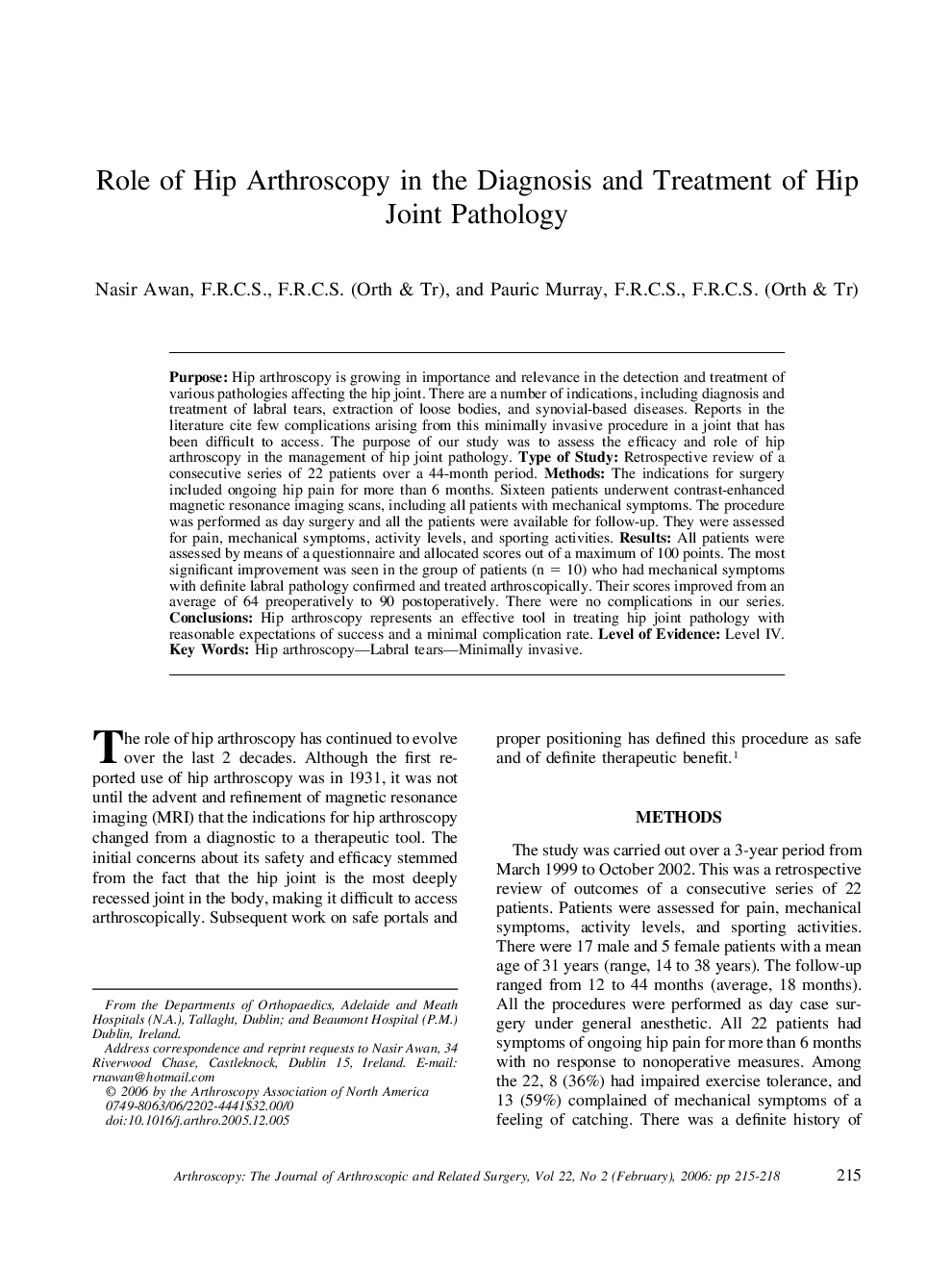| Article ID | Journal | Published Year | Pages | File Type |
|---|---|---|---|---|
| 4047326 | Arthroscopy: The Journal of Arthroscopic & Related Surgery | 2006 | 4 Pages |
Purpose: Hip arthroscopy is growing in importance and relevance in the detection and treatment of various pathologies affecting the hip joint. There are a number of indications, including diagnosis and treatment of labral tears, extraction of loose bodies, and synovial-based diseases. Reports in the literature cite few complications arising from this minimally invasive procedure in a joint that has been difficult to access. The purpose of our study was to assess the efficacy and role of hip arthroscopy in the management of hip joint pathology. Type of Study: Retrospective review of a consecutive series of 22 patients over a 44-month period. Methods: The indications for surgery included ongoing hip pain for more than 6 months. Sixteen patients underwent contrast-enhanced magnetic resonance imaging scans, including all patients with mechanical symptoms. The procedure was performed as day surgery and all the patients were available for follow-up. They were assessed for pain, mechanical symptoms, activity levels, and sporting activities. Results: All patients were assessed by means of a questionnaire and allocated scores out of a maximum of 100 points. The most significant improvement was seen in the group of patients (n = 10) who had mechanical symptoms with definite labral pathology confirmed and treated arthroscopically. Their scores improved from an average of 64 preoperatively to 90 postoperatively. There were no complications in our series. Conclusions: Hip arthroscopy represents an effective tool in treating hip joint pathology with reasonable expectations of success and a minimal complication rate. Level of Evidence: Level IV.
